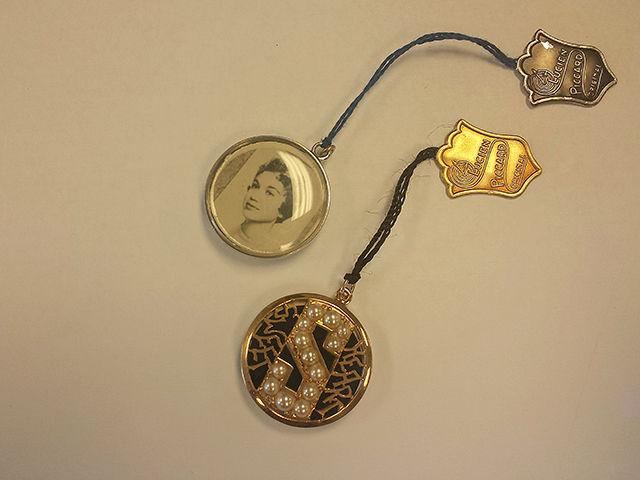
Jillian Smith
This piece was featured in the vintage jewelry show which took place in Cary.
Due to overwhelming popularity, Joint Venture Jewelry in Cary extended its annual Vintage Jewelry Show until Sunday—four days past its original end date.
Husband and wife duo Lee and Donna Hankin own Joint Venture Jewelry. Their two daughters, Jen and Karly, work for the shop as well.
Joint Venture has been hosting this show for 12 years, working closely with a third-generation jewelry dealer based out of New York, according to Jen Hankin, NC State alumna and director of communication for the shop.
“He works with different estates and collections and travels around the country with them,” Hankin said.
Some of the pieces featured in the show date as far back as the late 1800s and as recent as the 1940s. According to Hankin, these are truly vintage pieces as they are no longer created and can rarely be located.
These pieces are distinct and unique to their time periods, showing the progression of jewelry-making technology and styles throughout history, according to Hankin.
Joint Venture Jewelry’s rare selection delights customers and is a major component to its success, so verifying the jewelry’s authenticity is important.
“The best way to date jewelry is to look at the stones in there, specifically the diamonds and the way they are cut,” Hankin said. “The cutting technique relates to when they were made.”
Some of the first pieces clients can look at in the store are from the age of Queen Victoria.
The era of Victorian jewelry began with Queen Victoria’s coronation in 1837. As a queen, she loved jewelry; she designed it, wore it and frequently gave it as gifts, according to the Joint Venture Jewelry Facebook page, which Hankin updates regularly.
Two of the most prominent styles that Queen Victoria made popular are cameos, jewelry featuring a carved face, and mourning jewelry which is a locket containing a picture of a deceased loved one and the other side holding a lock of his or her hair.
Joint Venture Jewelry also features art deco and carved rock crystal pieces of the 1920s to 1930s for the show.
“Crystal used to be considered fine jewelry,” Hankin said. “They didn’t have the technology to have a lot of real stuff like diamonds.”
Carved rock crystal pieces were considered fine jewelry and were popular during the 1920s and early 1930s.
Joint Venture’s Vintage Jewelry Show allows patrons to pair original vintage ring mountings with any stone of their choosing. The store offers a wide variety of these one-of-a-kind pieces. Customers can then choose the stone and setting they want and Joint Venture will put it together.
The show displays other items such as neck pins and charms that are indicative of changes in fashion.
The pins were typically worn in the center of the high-neck collar women had to wear in the late 1800s to early 1900s. Now, they are more commonly worn as brooches on the upper part of a shirt or blazer, according to Hankin.
Another change she noted was the transition from interactive, moving charms to ones that “just hang there.” Many of Joint Venture’s vintage charms feature parts that open and move around.
“You can see they took time in the craftsmanship of these [charms],” Hankin said.
Craftsmanship is one of the major points Hankin makes customers aware of when they are looking at these vintage pieces. Many of the older pieces of jewelry featured were made entirely by hand.
“Having these specialty pieces in the store allows us to educate our clients and tell them more about the history of jewelry,” Hankin said.